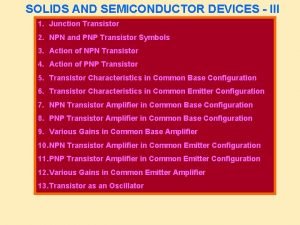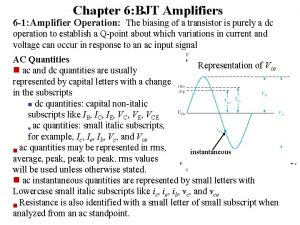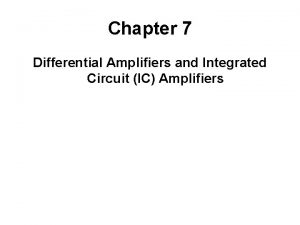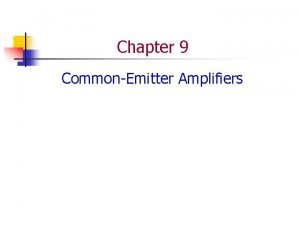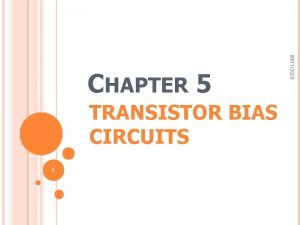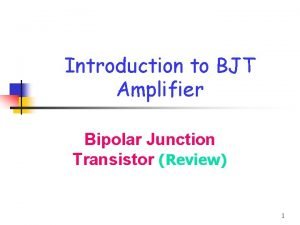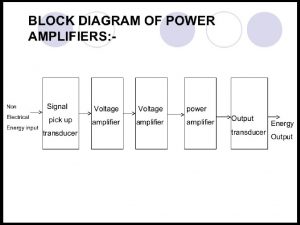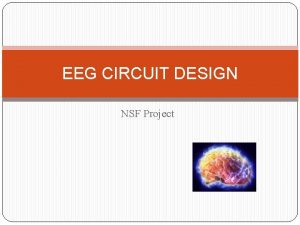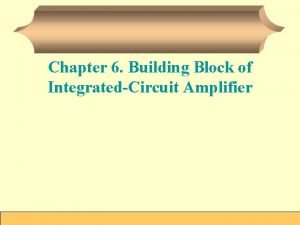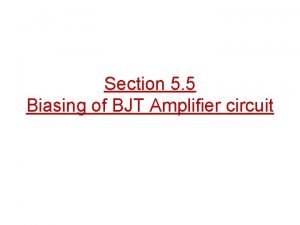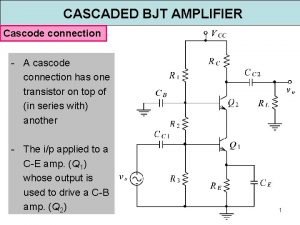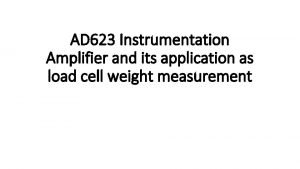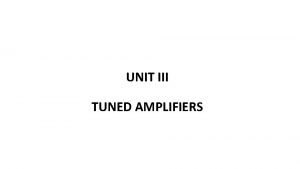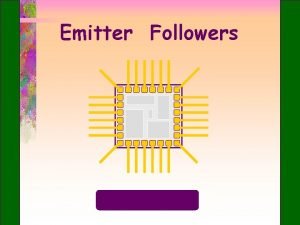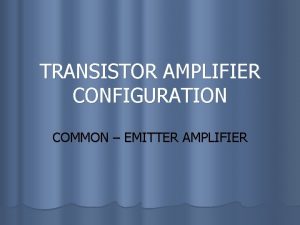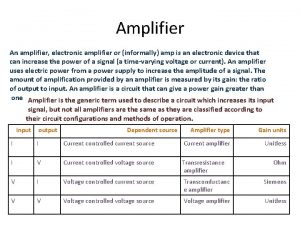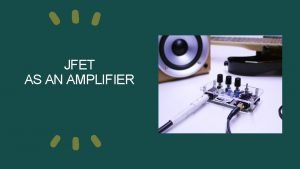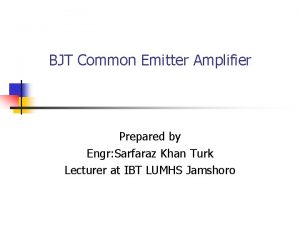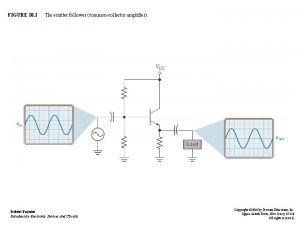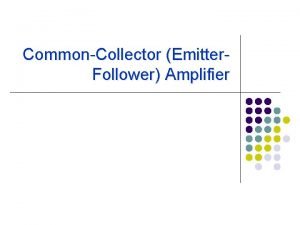Common Emitter Amplifier To analysis the circuit Determine















- Slides: 15

Common Emitter Amplifier • To analysis the circuit: – Determine quiescent conditions – Calculate transconductance – Calculate small signal performance • • Voltage Gain Input Impedance Output Impedance Cut-off frequency

Quiescent Conditions

Small Signal Analysis: Voltage Gain As before:

Input and Output Impedance • Unlike the op-amp, transistor amplifiers have significant output impedances and finite input impedances – RIN can be comparable with the source resistance of the input signal – ROUT can be comparable with the load resistance

Input Impedance i. IN i. RB i. B • Input impedance, r. IN, is the ratio of the small signal input voltage and the small signal input current

Input Impedance (cont) i. IN i. RB i. B

Output Impedance • One way to measure r. OUT is: – Short the input to 0 V – Output now looks like just r. OUT

Output Impedance (cont) Applying Kirchoff’s current law: By Ohm’s law:

Coupling Capacitors • Capacitor COUT is needed to remove the d. c. component of the collector voltage • Capacitor CIN is needed to allow the base voltage to be offset from 0 V • In both cases this is known as coupling • Both capacitors are chosen to look like short circuits at operating frequencies • Their reactance will, however, become significant at low frequencies

Equivalent Circuit

Cut-Off Frequency Cut-off frequency, or – 3 d. B point, is when the gain of the amplifier falls by a factor of Ö 2 If the cut-off frequency, f. C, is specified and r. IN has been calculated: NB. This assumes that COUT still looks like a short circuit

COUT • For the lower cut-off frequency calculation to be valid, COUT should still look like a short circuit at f. C • Typically, choose:

Emitter Capacitor For the highest voltage gain, But, v. BE v. IN v. E where, Also,

Emitter Capacitor (cont) For CE to not interfere at f. C: Where, v. BE v. IN v. E To make sure, choose, NB. Use r. E (=VT/IC) not RE for this calculation!

Summary • In the context of the common-emitter amplifier we have covered: – Small signal analysis – Mutual conductance – Input/output impedance – Coupling capacitor requirements and cut-off frequencies • Next time: – Applying the same principles to the differential amplifier – It’s actually a much easier circuit to analyse – honest! – Make sure you’re happy with the fundamentals by then!
 Pnp common emitter amplifier
Pnp common emitter amplifier Common emitter amplifier
Common emitter amplifier Emitter coupled differential amplifier
Emitter coupled differential amplifier The emitter of a swamped amplifier
The emitter of a swamped amplifier Transistor formulas
Transistor formulas Contoh soal rangkaian transistor
Contoh soal rangkaian transistor Ce configuration of transistor
Ce configuration of transistor Voltage amplifier vs power amplifier
Voltage amplifier vs power amplifier Eeg circuit design
Eeg circuit design Fully differential amplifier circuit
Fully differential amplifier circuit Building blocks of integrated-circuit amplifiers中文
Building blocks of integrated-circuit amplifiers中文 Transistor amplifier biasing
Transistor amplifier biasing Cascade bjt amplifier
Cascade bjt amplifier Load cell amplifier ic
Load cell amplifier ic Difference between single tuned and double tuned amplifier
Difference between single tuned and double tuned amplifier Advantages of multistage amplifier
Advantages of multistage amplifier
